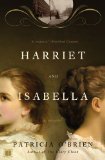Uncle Tom's Cabin, Absinthe & Brooklyn
This article relates to Harriet and Isabella

- Uncle Tom's Cabin by Harriet Beecher Stowe was the best-selling novel of the 19th century (and the second best-selling book of that century, following the Bible) and is credited with helping fuel the abolitionist cause in the 1850's. In the first year after it was published, 300,000 copies of the book were sold in the United States alone. Considering that the population of the USA was about 23 million in 1850 that would be equivalent to about 4 million copies being sold in one year today. The book's impact was so great that when Abraham Lincoln met Stowe at the start of the American Civil War, Lincoln is often quoted as having declared, "So this is the little lady who made this big war."
- In Harriet and Isabella, Harriet Beecher Stowe attends a dinner party at the house of their neighbor Samuel Clemens (better known as Mark Twain) in Hartford Connecticut (1875), where the drink of the evening was absinthe. Banned in the United States in 1912, the legacy of absinthe as a mysterious, addictive, and mind-altering drink continues to this day. Made from aromatic herbs including anise, fennel and grande wormwood, it was the most popular drink in France in the 19th Century and introduced to the United States through New Orleans. It was often referred to as "madness in a bottle" or "Green Fairy". Many artists and writers were noted absinthe drinkers and featured absinthe in their works, such as Vincent van Gogh, Édouard Manet, Guy de Maupassant, Arthur Rimbaud, Henri de Toulouse-Lautrec and Paul Verlaine. Later authors and artists would draw from this cultural well including Pablo Picasso, August Strindberg, Oscar Wilde and Ernest Hemingway.
Though much vilified, there's been no firm evidence that absinthe is any more dangerous or psychoactive than ordinary alcohol. Some speculate that the reported effects were due to poisonous chemicals being added to the base ingredients, perhaps in an effort to produce a more vivid color. After a 95-year ban in the US, some brands of absinthe became legally available again in 2007.
- Brooklyn Heights forms the backdrop to much of Harriet and Isabella. At one point, Harriet and sister Catherine took a much-needed break from their daily attendance at their brother's heated trial to join the Brooklyn crowd which has gathered at the dock to peer upward at the shaft of the tower that marks the completion of the first stage of a new bridge. Eight years later, on May 24, 1883, at 2:00 P.M., the Brooklyn Bridge opened with an initial bridge toll of one cent on opening day and three cents thereafter. 150,300 people crossed the bridge that day. The bridge opened for vehicles at 5 P.M. with 1,800 vehicles crossing that day at 5 cents each.
Filed under Books and Authors
 This "beyond the book article" relates to Harriet and Isabella. It originally ran in January 2008 and has been updated for the
January 2009 paperback edition.
Go to magazine.
This "beyond the book article" relates to Harriet and Isabella. It originally ran in January 2008 and has been updated for the
January 2009 paperback edition.
Go to magazine.
Membership Advantages
- Reviews
- "Beyond the Book" articles
- Free books to read and review (US only)
- Find books by time period, setting & theme
- Read-alike suggestions by book and author
- Book club discussions
- and much more!
-
Just $60 for 12 months or
$20 for 3 months.
- More about membership!

![]() This "beyond the book article" relates to Harriet and Isabella. It originally ran in January 2008 and has been updated for the
January 2009 paperback edition.
Go to magazine.
This "beyond the book article" relates to Harriet and Isabella. It originally ran in January 2008 and has been updated for the
January 2009 paperback edition.
Go to magazine.